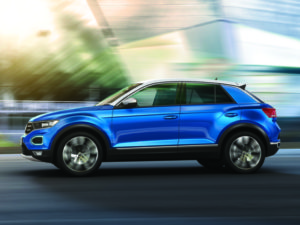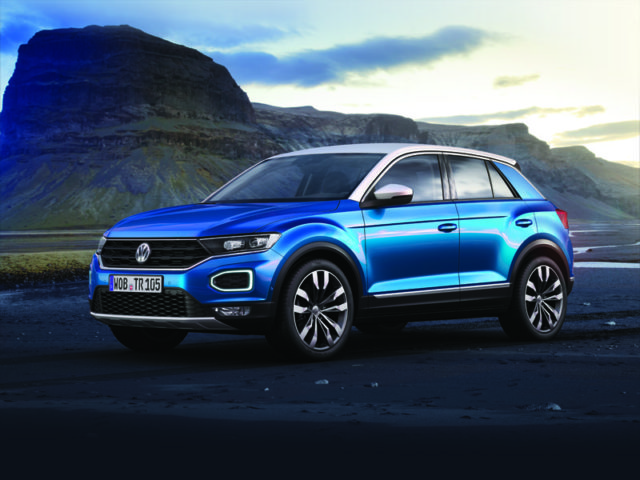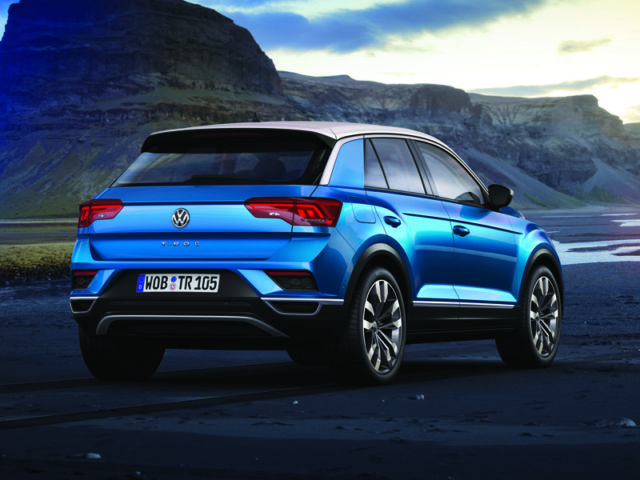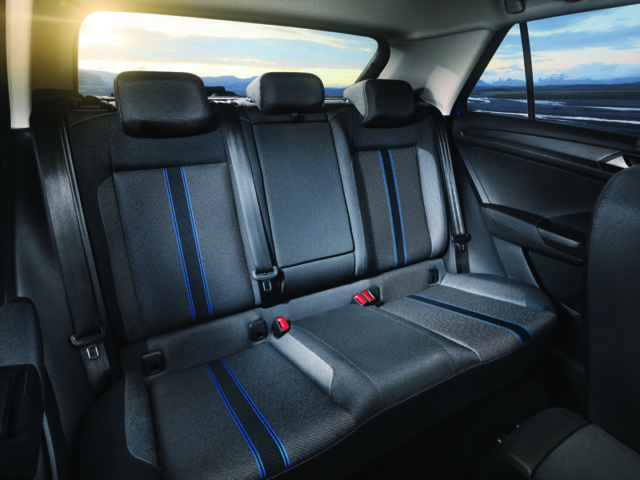Spotlight: Volkswagen T-Roc
Volkswagen’s entry into the compact crossover segment is a good reason for established rivals to be worried, and it’s just the start of the brand’s SUV boom, explains Alex Grant.

Volkswagen T-Roc
Part of the family
Volkswagen sees big opportunities for its SUV line-up. Positioned beneath the Tiguan, which will soon also be available in seven-seat Allspace guise, the T-Roc will arrive in the UK at the end of the year, just as the all-new Touareg breaks cover. A Polo-based crossover called the T-Cross is also due to be revealed during 2018, while the recent I.D. Cross concept is a glimpse of plans for an electric crossover likely to appear in around 2020/21.
So the T-Roc will be a major contributor, entering a segment which the brand predicts to double in size to 11m units globally over the next decade and with hints that it could be one of the brand’s best-sellers in the UK. Although three quarters will go to retail customers, Volkswagen has hinted that the T-Roc could outsell the Passat as a ‘true fleet’ car, becoming the third biggest-seller in that market after the Golf and Tiguan.
Functional but personal
The T-Roc is almost identical in size to the Audi Q2, and the two cars share a platform. This means it is 24mm shorter end to end than a Golf hatch, but slightly wider and taller overall. There’s space for five on board, and the boot is bigger than you’ll find in either a Q2 or a Golf, as well as its closest rivals.
Like most crossovers, it’s a design statement as well as a step up in practicality. The range will include Style and Sport versions, with personalisation options including bi-colour bodywork matched to sections of the dashboard. All UK cars will get a touchscreen measuring at least 6.5 inches across, while the glass-fronted 8.0-inch screen is available as an option, and can be equipped with Apple CarPlay and Android Auto smartphone connectivity.
Familiar engines
Engine options from launch will be familiar to most other Volkswagen Group products. Diesel options comprise a 1.6-litre unit with 113bhp, and two 2.0-litre engines producing 148 or 188bhp. Four-wheel drive and a seven-speed dual-clutch automatic is offered on the mid-spec engine, and both are standard on the most powerful diesel. Based on the Q2, CO2 emissions for the most efficient version should be around 110-115g/km.
However, it’s expected that around 80% of T-Roc customers will opt for petrol engines – the Q2 and Ateca imply these could offer similar CO2 emissions to the diesels. The UK won’t get the 188bhp 2.0-litre petrol, but 1.0-litre 113bhp and 1.5-litre 148bhp versions could suit some low-mileage users. It’s also possible that the T-Roc could get a plug-in hybrid or electric drivetrain at some point, as both are offered in the Golf.
Fleet fact
Volkswagen has plans for a 19-model global SUV range in the near future.
What we think…
Arguably Volkswagen is over-crowding the small end of its SUV line-up, with the T-Roc set to be sandwiched between the T-Cross and Tiguan in the near future. But this is a growing part of the market, and, with personalisation and badge appeal on its side, the T-Roc is a real threat to its established rivals, even with pricing likely to be closer to larger crossovers. It could also plug the gap in the Group portfolio left by the recently discontinued Skoda Yeti.
















